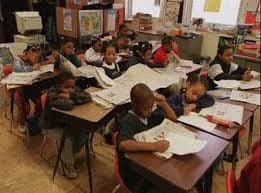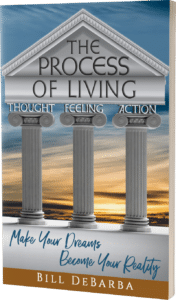Give me your tired, your poor, your huddled masses yearning to breathe free.
These are the precious words on the Statue of Liberty. While this message was not placed on the statue until 1903, those words truly represent the intention of our forefathers. The stream of people who came—and continue to come—from all over the world with the hope of freedom and opportunity is the single biggest factor that has blossomed our country to greatness.
“Greetings”
The words imply a warm welcome to people coming to our country. But as we have seen in our history, the greetings offered by existing citizens were not always very warm.
When the Irish arrived, they were treated badly. They came to escape the potato famine around 1845. They were given the worst and most dangerous jobs available for little money. Quite a few companies would not hire them. Many newspapers’ job ads had the words “Irish Need Not Apply.”
The details were different, but the stories were about the same for Italians, Germans, Jews, and several others.
However, within a couple of generations, those groups were accepted. You see, they are White. That made it much easier for them to blend into mainstream society. They began working together in businesses and jobs, as well as joining each other in social events. What would have been unheard of—” mixed” marriages—became common.
Other groups of immigrants do not have the advantage of being White. Asians, Muslims, Hispanics, to name a few. Even after many generations, they have difficulty being fully accepted to this day. For example, people of Japanese descent – even those who had lived here their whole lives – were sent to and held at internment camps during WWII.
However, there is one group that has been treated differently from any other. The ancestors of African Americans (Blacks) did not choose to come to America. They were captured in Africa and brought here against their will. Once they arrived, they were sold as slaves. For 250 years, Blacks have been treated like they were less than human.
History of Racial Prejudice Against Blacks
Unlike what many people believe, slavery did not end with the Civil War. Jim Crow laws in the South and behavior by Whites in other parts of the country (that might as well have had those laws) continued to keep Blacks socially and economically suppressed. There have been efforts over many decades to address these issues and move toward lasting racial equality. Here is a very brief history of some of the early elements of that movement:
• December 1, 1955 – Rosa Parks refused to sit in the back of the bus.
• Mid-1950s through 1968—Dr. Martin Luther King initiated a powerful, peaceful, and effective movement to recognize racism in our country and start the momentum to make changes.
• 1962 – James Meredith, a Black student, was enrolled in the University of Mississippi while accompanied by United States Marshalls and other federal troops. 206 Marshalls and soldiers were wounded, and 2 bystanders were killed.
• The Civil Rights Act of 1964 was passed.
• In the late 1960s, major demonstrations were held to enforce racial equality.
This is just a small sample. There are many other significant events. However, the point is that while some progress was made through all these efforts, true racial equality is still far out on the horizon. Many protests and demonstrations have taken place to attempt to make changes towards equality, but none have moved us very far forward.
Do these protests/demonstrations have anything in common?
The details of these events show that they have a great deal in common. They are normally triggered by something tragic that happens to a Black person. Law officers initiated some – and those receive the most attention. But far more were committed by the civilian population.
Any one of these events can begin the process of public protests. Each protest group contains a vast majority of peaceful folks (Black and White) who are demonstrating against real wrongdoing.
A minority of the protesters – either out of anger or malice – destroy property, loot stores, and injure people. Only a few of them are arrested and punished for their crimes. The press focuses on this small number of criminals to encourage readers and viewers to pay attention to their broadcasts (and their sponsors.) People who already lean towards racism use these unlawful actions as an excuse to maintain or even increase the intensity of their racist feelings.
Eventually, government officials announced support for the demonstrators. Investigations are begun. Committees are formed. In each case, some improvements are made. However, the accomplishments generally fall far short of the goal. Blacks continue to be treated as less important, less intelligent, less ambitious, and less motivated than Whites. Within about a year (or less – sometimes much less), the whole process of protest and violence begins again, with basically the same results.
Is there an effective way to bring about true racial equality?
Let’s look at an aspect of the American culture where true equality does exist.
In just about every professional sport, there is a mixture of Black and White players. Some sports, such as football and basketball, have far more Black players than White. In this venue, it is rare to have a Black person treated with less respect than Whites among their peers. Judgment is passed based on skill and dedication – not skin color.
Why is this true? Because achieving these goals requires highly skilled training, hard work, and dedication to learn and apply the necessary skills. Those willing to sacrifice to reach the top are respected by their peers and fans, regardless of skin color. And they are well rewarded financially. Americans love sports and will pay a great deal to attend sporting events.
Besides the money factor, the people who follow their performance worship these professionals. Many people who suffer from racial prejudices will fight to get an autograph from a star athlete, regardless of his/her race.
The bottom line is that the “education” that people in the sports/entertainment business receive and their willingness to dedicate their efforts to their goals are huge factors in their success. But not everyone, regardless of color, can become professional athletes, no matter how hard they try. Trust me—I’ve tried!
Can this type of racial equality and respect be integrated into the rest of our society?
The obvious solution to releasing racism’s hold on our country is to provide equal access to quality education in all possible skill sets—just like the education that athletes receive. Quality education is the primary factor that opens the door to meaningful and well-compensated careers.

In most parts of our country, the education opportunities for Whites vs Blacks are very disproportionate. The Brooking Institution has stated that “the U.S. educational system is one of the most unequal in the industrialized world, and students routinely receive dramatically different learning opportunities based on their social status” – Unequal Opportunity: Race and Education. Schools in Black neighborhoods are usually in far worse condition than those in White neighborhoods. They have outdated or non-existent equipment and other facilities needed for usable training. The pupil-to-teacher ratio is much higher. Individual attention is almost impossible.
For a Black person to overcome these disadvantages and become successful on his/her own in what has always been the “White world” can take near superhuman effort.
What causes this discrepancy?
The main cause is based on the means we use to fund our schools.
The near-universal method that is used to fund schools is based on politically assigned geographical boundaries known as School Districts. Lines are drawn (and conveniently updated) to determine what schools will be built in each neighborhood and the funding needed to operate them. Homeowner taxes, local income, and sales taxes – collectively known as “local revenue” – are the primary sources of funds used to construct, supply, and maintain the schools in each district.
Many Blacks, whose family history of educational opportunities has been systemically stifled over many decades, have not been able to get the higher education and jobs that Whites have traditionally enjoyed.
Too many of them cannot afford even middle-class housing. They have low income. Consequently, they don’t spend very much. A large number live in extremely poor neighborhoods. Because of their low home values, they pay very little in property taxes. As a result of all of these factors, their contribution to local revenue is very low. This leaves inadequate funds available in their school districts to build and supply schools with the features necessary to provide a comparative education to those in White neighborhoods.
Besides educational disadvantages, the message being given to young Blacks is that they are not worthy of the same opportunities as Whites. Many of them feel rejected from the mainstream of society. And feeling rejected in any part of life causes pain and bitterness. You don’t need a Ph.D. to see where this can – and does – lead.
So how do we fix it?
One possible way is to scrap the whole school district paradigm. The local revenue generated can be collected at the state level and distributed equitably to each neighborhood school. While collecting local revenue at the state level has been tried by several states, somehow the revenue per student is still much higher in the “rich” school districts. The removal of school district definitions might enhance the equality of funding. Maybe taxes will need to be increased some to make this work. But ask yourself – how does that relatively small cost compare to how we are all suffering now?
Note: Creating a viable plan to ensure equitable school funding is far more complicated than presented here and outside the scope of this document. If you’d like to learn more, visit this site: School Finance and Property Taxes
I recognize that this kind of enhancement to our educational system will be fervently resisted – to the point where it most likely won’t be accepted. I welcome other ideas. But whatever means are used, every child must be given the same educational opportunity. It will be up to ALL students to take advantage of those opportunities and work hard to accomplish their goals.

Some people have promoted the idea of providing payment to Blacks as a form of compensation for the horrible treatment of their race, going back to the time of slavery. I agree with the sentiment but not the method. I would much rather see that money applied to schools located in Black neighborhoods. By using the funds his way, we can begin the process of building the means for real educational opportunities.
Our Declaration of Independence states that all men are created equal. With all due respect to our noble ancestors, I must disagree. We are not all created equal. We are created with different innate skills, intelligence, health issues, and physical abilities.
But while we may not be created equal, we are entitled to equal opportunities. To provide anything less violates the heart of our heritage as Americans. Until we provide equality in education, we have little chance to resolve the same issue we have been facing for over 150 years. And if we don’t address the problem now, our children and their children and who knows how many future generations will have to deal with the same problem and pain.
The single most important step toward lasting racial equality in the United States is to provide equal educational opportunities to all people.

